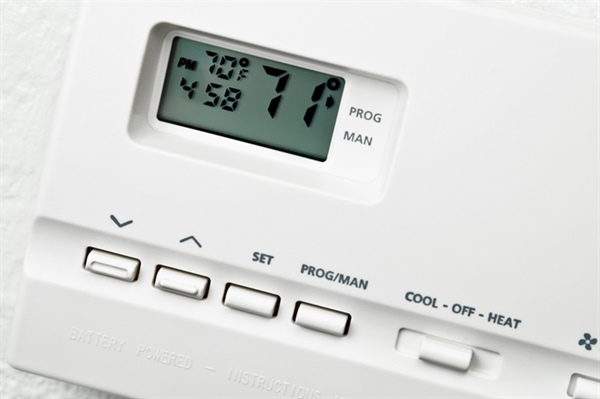Improve Furnace Energy Efficiency: Expert Tips for Your Home

Improving your furnace's energy efficiency can significantly lower utility costs and keep your home comfortable during the cold months. With rising energy prices and environmental concerns, many homeowners seek practical ways to optimize furnace performance without compromising comfort.
Understanding the key factors that influence furnace efficiency can help you make informed decisions to enhance your home's heating system, and our team of experts is here to help!
Dive in to discover actionable tips and techniques to keep your home warm while saving energy.
Optimal Thermostat Settings for Energy Savings
Adjusting your thermostat settings strategically can greatly enhance energy efficiency. During the winter months, setting the thermostat to 68°F while you're awake and lowering it by 7-10°F at night or when you're away can reduce energy bills significantly.
The U.S. Department of Energy recommends this approach for maintaining comfort while conserving energy.
When paired with a furnace designed for energy efficiency, these settings optimize performance and reduce strain on the system. Maintaining consistent temperatures also prevents the furnace from overworking, which can lead to higher energy consumption and wear over time.
Avoid frequent temperature adjustments, which forces the furnace to work harder to maintain comfort.
For expert insights and support with furnace optimization, check out tips on our furnace installation & repair page.
The Impact of Proper Insulation on Furnace Efficiency
Proper insulation is critical for improving furnace efficiency. Insulation helps maintain indoor temperatures by preventing heat loss through walls, ceilings, and floors. Without adequate insulation, your furnace needs to work harder to compensate for the heat escaping your home, leading to higher energy bills and unnecessary wear on the system.
Key areas to inspect include the attic, basement, and exterior walls. Upgrading insulation in these areas ensures that your home retains heat effectively, allowing your furnace to operate at its optimal level. Sealing gaps around windows and doors with weather stripping or caulk further reduces energy waste.
Investing in high-quality insulation materials improves furnace performance, enhances overall comfort, and reduces environmental impact by lowering your home's carbon footprint.
The Role of Programmable Thermostats in Energy Conservation
Programmable thermostats are a game-changer for energy conservation. They allow homeowners to set specific temperature schedules based on daily routines, ensuring the furnace operates efficiently only when needed.
For example, you can program the thermostat to lower the temperature during work hours and automatically increase it before you return home.
This technology eliminates the need for manual adjustments, providing a consistent and efficient way to control energy usage.
Advanced models also offer Wi-Fi connectivity, allowing remote access and adjustments via smartphone apps, further enhancing energy-saving capabilities.
Integrating a programmable thermostat with your heating system can significantly reduce energy consumption and costs while maintaining a comfortable indoor environment.
Sealing Ducts and Vents for Improved Efficiency
Leaky ducts and poorly sealed vents are common culprits of energy loss in HVAC systems. Studies show that up to 30% of heated air can be lost through leaks in ductwork, forcing your furnace to work harder to compensate for the loss.
Sealing these leaks ensures that warm air reaches its intended destination efficiently.
Techniques like using mastic sealant or metal-backed tape can effectively close gaps and leaks in ducts. Insulating ducts in unheated areas, such as attics and crawl spaces, also prevents heat loss during air distribution. Regular inspections and maintenance are key to identifying and addressing leaks early.
Efficient duct sealing boosts furnace performance and improves indoor air quality by reducing the entry of dust and allergens into the ductwork.
Benefits of Upgrading to a High-Efficiency Furnace Model
High-efficiency furnace models offer superior performance while consuming less energy. Rated by their Annual Fuel Utilization Efficiency (AFUE), these systems convert more fuel into usable heat compared to traditional models, with some achieving up to 98% efficiency. This translates to significant savings on energy bills over time.
Modern high-efficiency furnaces often feature advanced components like variable-speed blowers and modulating gas valves, which adjust heating output based on real-time demand. These features ensure consistent indoor temperatures and reduce energy waste. They are also more environmentally friendly, emitting fewer greenhouse gases.
If you're considering upgrading, Duell Plumbing & Heating provides expert guidance and support to ensure you choose a system that meets your needs and budget.
Why Choose Duell Plumbing & Heating for Your Heating Needs?
Optimizing your furnace's energy efficiency starts with understanding the key factors impacting performance, from thermostat settings to proper insulation. Duell Plumbing & Heating offers expert services to ensure your home stays warm and energy-efficient throughout winter.
Whether you're sealing ducts and vents, upgrading to a high-efficiency furnace, or looking for advice on thermostat settings, our team is here to help. With years of experience and a commitment to quality, we provide reliable solutions tailored to your specific needs.
Contact us today at 518-384-1567 or schedule a service to learn how to improve your home's furnace energy efficiency.